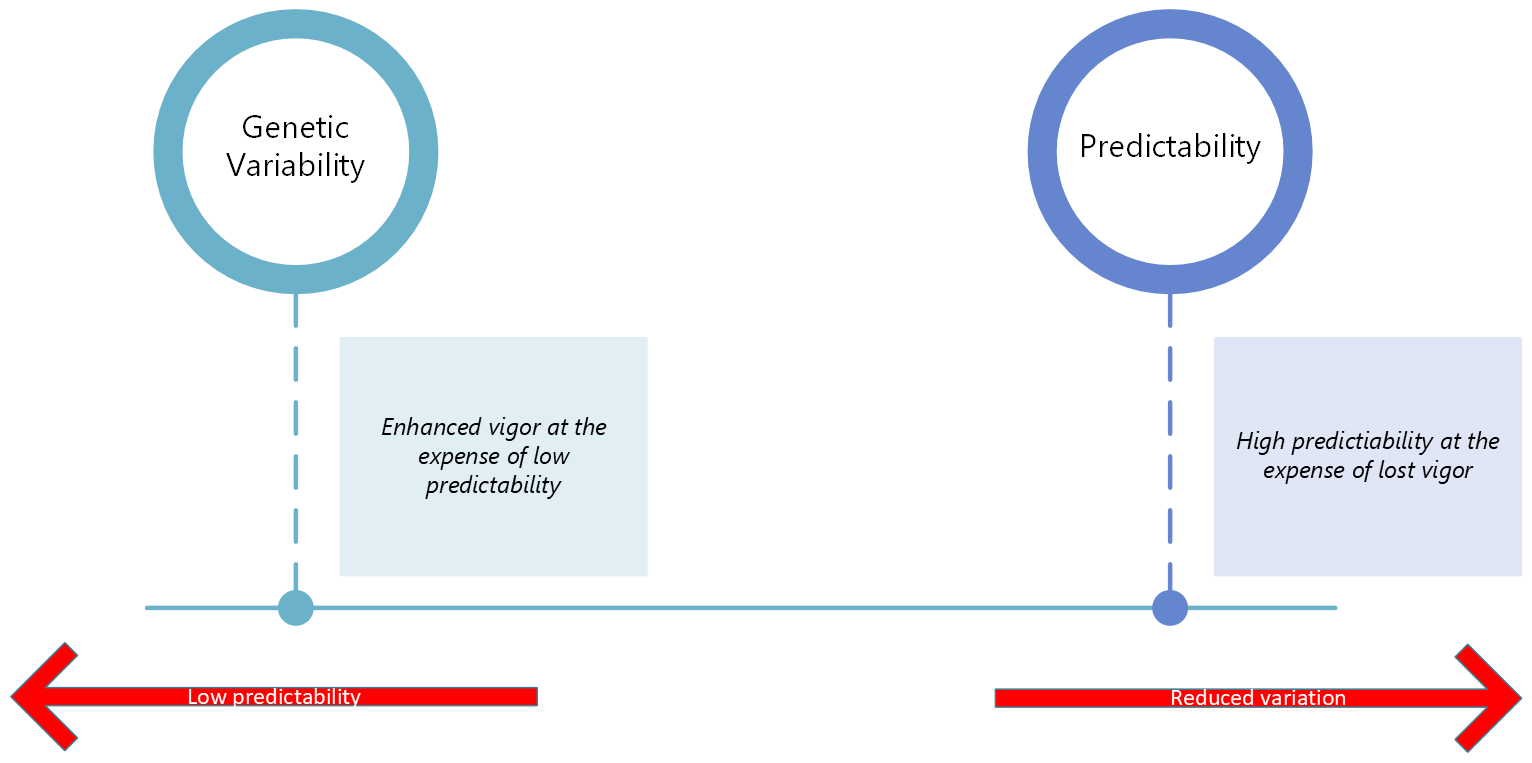A dog breed, or any animal breed, requires a delicate balance between genetic diversity and consistency of traits. Both of these aspects are essential for the breed’s long-term survival and health, as well as for maintaining the breed’s defining characteristics.
Variability for Health: Variability in a breed’s gene pool is essential for maintaining the breed’s overall health. Greater genetic diversity can help protect a breed from certain inherited diseases and health issues. This is because it is less likely that two individuals will carry the same deleterious recessive genes if there’s greater variability in the population. This concept is well illustrated by the problem of inbreeding, where too much similarity in the gene pool can lead to the expression of harmful traits and health problems.
Consistency for Predictability: On the other hand, breeders and owners often want a certain level of predictability in a breed. This could be in terms of physical characteristics, temperament, or abilities (such as a retriever’s instinct to fetch, an English Shepherd’s herding instincts, or a hound’s tracking ability). Consistency of traits across individuals in a breed allows people to select a breed that suits their lifestyle and expectations, and it’s a big part of why dog breeds exist in the first place.
To achieve a balance between health and predictability, responsible breeders use various strategies. One such strategy, which I’d like to explore here, is assortative mating.
Assortative mating as a breeding strategy
Assortative mating as a breeding strategy involves choosing breeding partners that are phenotypically similar for desired traits, without them necessarily being closely related genetically. The goal is to increase the frequency of these desirable traits in subsequent generations. This could be, for instance, two unrelated dogs with particularly strong working ability being bred to increase the likelihood of their offspring also having strong working ability.
This approach avoids many of the issues associated with inbreeding, which can cause a range of health problems due to the increased likelihood of passing on harmful recessive traits. This happens because close relatives are more likely to share these harmful recessive traits.
However, there are a few important caveats to consider:
- Assortative mating doesn’t guarantee that the desired traits will become fixed in the population. This depends on the genetic basis of the trait. Some traits may be influenced by a large number of genes and environmental factors, meaning it might be difficult to selectively breed for them.
- Even with assortative mating, there’s still the possibility of unintentionally selecting for undesirable traits that happen to be linked to the desirable ones. This is especially the case with traits that are governed by several genes, where one gene might affect multiple traits (pleiotropy).
- Also, while assortative mating reduces the risk of genetic disorders compared to inbreeding, it doesn’t eliminate the risk altogether. Even unrelated individuals can carry harmful recessive alleles.
- It’s also important to maintain genetic diversity within a breeding population to keep it healthy and resilient to diseases or changing environments. This can become a challenge when selective breeding (including assortative mating) is used intensively.
Assortative mating in practice
Assortative mating in practice requires careful planning and consideration. Here are some steps to implement this:
- Identify Desired Traits: The first step is to clearly identify the traits that you want to enhance in the offspring. These could be physical traits (e.g. size, structure) or behavioral traits (e.g. temperament, working ability, etc.). You might also consider health traits like resistance to certain diseases.
- Select Parent Animals: Choose unrelated parent animals that strongly exhibit the desired traits. This increases the chances of offspring inheriting these traits. At the same time, be careful of selecting individuals with similar undesirable traits, as these could also be amplified in the progeny.
- Consider the Genetic Basis of the Trait: Some traits are controlled by a single gene, while others are polygenic (controlled by many genes) or influenced by environmental factors. This could affect the success of your assortative mating strategy. Genetic testing and pedigree analysis may help in understanding the genetic basis of the trait.
- Monitor Results and Adjust as Necessary: After a few generations, evaluate the results of your breeding program. Are the desired traits becoming more common? Are there any unexpected health issues or undesired traits appearing? Use this information to make necessary adjustments to your assortative mating plan.
- Maintain Genetic Diversity: While it’s important to breed for specific traits, it’s also crucial to maintain genetic diversity within the population. This helps to ensure the overall health and vitality of the animals, and resilience to environmental changes and diseases. This may involve occasionally introducing unrelated animals into your breeding program.
- Consult Professionals: Working with geneticists, veterinarians, and experienced breeders can be incredibly helpful in creating and managing a successful breeding program. They can provide guidance, conduct health screenings, and help you understand the potential genetic implications of your breeding decisions.
Assortative mating is a strategy that needs to be used judiciously. Overemphasis on a specific trait could lead to neglect of other traits, reducing the overall fitness of the population. Always strive for a balanced approach to breeding that takes into consideration the overall health, wellbeing, and diversity of the population.

